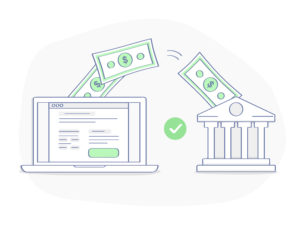Retirement Plan Options For Small Businesses

Retirement Plan Options For Small Businesses
Updated: 1/4/2013
According to The Pension & Welfare Benefits Administration, small businesses employ about half of the private-sector workforce in the United States. However, a majority of small businesses do not offer their workers retirement savings benefits.
If you’re like many other small business owners in the United States, you may be considering the various retirement plan options available for your company. Employer-sponsored retirement plans have become a key component for retirement savings. They are also an increasingly important tool for attracting and retaining the high-quality employees you need to compete in today’s competitive environment.
Besides helping employees save for the future, instituting a retirement plan can provide you, as the employer, with benefits that enable you to make the most of your business’s assets. Such benefits include:
Tax-deferred growth on earnings within the plan
Current tax savings on individual contributions to the plan
Immediate tax deductions for employer contributions
Easy to establish and maintain
Low-cost benefit with a highly-perceived value by your employees
Types of Plans
Most private sector retirement plans are either defined benefit plans or defined contribution plans. Defined benefit plans are designed to provide a desired retirement benefit for each participant. This type of plan can allow for a rapid accumulation of assets over a short period of time. The required contribution is actuarially determined each year, based on factors such as age, years of employment, the desired retirement benefit, and the value of plan assets. Contributions are generally required each year and can vary widely.
A defined contribution plan, on the other hand, does not promise a specific amount of benefit at retirement. In these plans, employees or their employer (or both) contribute to employees’ individual accounts under the plan, sometimes at a set rate (such as 5 percent of salary annually). A 401(k) plan is one type of defined contribution plan. Other types of defined contribution plans include profit-sharing plans, money purchase plans, and employee stock ownership plans.
Small businesses may choose to offer a defined benefit plan or any of these defined contribution plans. Many financial institutions and pension practitioners make available both defined benefit and defined contribution “prototype” plans that have been pre-approved by the IRS. When such a plan meets the requirements of the tax code it is said to be qualified and will receive four significant tax benefits.
The income generated by the plan assets is not subject to income tax, because the income is earned and managed within the framework of a tax-exempt trust.
An employer is entitled to a current tax deduction for contributions to the plan.
The plan participants (the employees or their beneficiaries) do not have to pay income tax on the amounts contributed on their behalf until the year the funds are distributed to them by the employer.
Under the right circumstances, beneficiaries of qualified plan distributors are afforded special tax treatment.
It is necessary to note that all retirement plans have important tax, business and other implications for employers and employees. Therefore, you should discuss any retirement savings plan that you consider implementing with your accountant or other financial advisors.
Here’s a brief look at some plans that can help you and your employees save.
SIMPLE IRA Plans: Savings Incentive Match Plans for Employees
A SIMPLE plan allows employees to contribute a percentage of their salary each paycheck and to have their employer match their contribution. This plan is ideally suited as a start-up retirement savings plan for small employers that don’t currently sponsor a retirement plan. Under SIMPLE plans in 2013, employees can set aside up to $12,000 each year by payroll deduction. If the employee is 50 or older then they can make Catch-up contributions of an additional $2,500. Employers can either match employee contributions up to 3% of the employee’s compensation or make a 2% non-elective contribution for each eligible employee.
SIMPLE plans are easy to set up – you fill out a short form, administrative costs are low, and much of the paperwork is done by the financial institution that handles the SIMPLE plan accounts. Employers may choose either to permit employees to select the financial institution that will receive their contributions, or to send contributions for all employees to one financial institution. Employees are 100% vested in contributions, get to decide how and where the money will be invested, and keep their IRA accounts even when they change jobs.
You can set up a SIMPLE IRA plan effective on any date from January 1 through October 1, provided that you did not previously maintain a SIMPLE IRA plan. However, if you are a new employer that comes into existence after October 1st, you can set up the SIMPLE IRA plan as soon as administratively feasible.
SEPs: Simplified Employee Pensions
A SEP allows employers to set up a type of individual retirement account – known as a SEP-IRA – for themselves and their employees. Employers must contribute a uniform percentage of pay for each employee. For 2013, employer contributions are limited to the lesser of 25% of the employee’s compensation or $51,000. (Note: this amount is indexed for inflation and will vary). SEPs can be started by a business of any size, even those that are self-employed. Elective deferrals and catch-up contributions are not permitted in SEP plans.
SEPs have low start-up and operating costs and can be established using a single quarter-page form. Businesses are not locked into making contributions every year. You can decide how much to put into a SEP each year – offering you some flexibility when business conditions vary. Employees are always 100% vested in all SEP-IRA money.
A SEP can be set up for a year as late as the due date (including extensions) of your business income tax return for the year you want to establish the plan.
401(k) Plans
401(k) plans have become a widely accepted savings vehicle for small businesses. A 401(k) plan allows employees to contribute a portion of their own income toward their retirement. The employee contributions, not to exceed $17,500 (in 2013), reduce a participant’s pay before income taxes, so that pre-tax dollars are invested. If the employee is 50 or older then they may contribute another $5,500. Employers may offer to match a certain percentage of the employees’ contribution, increasing participation in the plan.
While more complex, 401(k) plans offer higher contribution limits than SIMPLE plans and IRAs, allowing employees to accumulate greater savings.
An employer may make their 401(k) plan effective the first day of the tax year in which the plan was adopted.
Profit-Sharing Plans
Employers also may make profit-sharing contributions to a plan that is unrelated to any amounts an employee chooses to contribute. Profit-sharing Plans are well suited for businesses with uncertain or fluctuating profits. In addition to the flexibility in deciding the amounts of the contributions, a Profit-Sharing Plan can include options such as service requirements, vesting schedules and plan loans that are not available under SEPs.
For 2013, contributions are limited to the lesser of 25% of eligible employees’ compensation or $51,000. The contribution in any one year cannot exceed 25% of the total compensation of the employees participating in the plan. Contributions need not be the same percentage for all employees. Key employees may actually get as much as 25%, while others may get as little as 3%. A Profit-Sharing Plan can be combined with other retirement plans, such as a 401(k).
Your Goals for a Retirement Plan
Business owners set up retirement plans for different reasons. Why are you considering one? Do you want to:
Take advantage of the tax breaks, to save more money than you’d otherwise be able to?
Provide competitive benefits in addition to – or in lieu of – high pay to employees?
Primarily save for your own retirement?
Small employers who want to set up retirement plans generally fall into one of two groups. The first group includes those who want to set up a retirement plan primarily because they want to create a tax-advantage savings vehicle for themselves and thus want to allocate the greatest possible part of the contribution to the owners. The second group includes those who just want a low-cost, simple retirement plan for employees.
If there were one plan that was most efficient in doing all these things, there wouldn’t be so many choices. That’s why it’s so important to know what your goal is. Each type of plan has different advantages and disadvantages, and you can’t really pick the best ones unless you know what your real purpose is in offering a plan. Once you have an idea of what your motives are, you’re in a better position to weigh the alternatives and make the right pension choice.
If you do decide that you want to offer a retirement plan, you are definitely going to need some professional advice and guidance. Pension rules are complex, and the tax aspects of retirement plans can also be confusing. Make sure you confer with your accountant before deciding which plan is right for you and your employees.
We hope you found this article about “Retirement Plan Options For Small Businesses” helpful. If you have questions or need expert tax or family office advice that’s refreshingly objective (we never sell investments), please contact us or visit our Family office page or website www.GROCO.com.
To receive our free newsletter, contact us here.
Subscribe our YouTube Channel for more updates.

Alan Olsen, is the Host of the American Dreams Show and the Managing Partner of GROCO.com. GROCO is a premier family office and tax advisory firm located in the San Francisco Bay area serving clients all over the world.
Alan L. Olsen, CPA, Wikipedia Bio

GROCO.com is a proud sponsor of The American Dreams Show.

The American Dreams show was the brainchild of Alan Olsen, CPA, MBA. It was originally created to fill a specific need; often inexperienced entrepreneurs lacked basic information about raising capital and how to successfully start a business.
Alan sincerely wanted to respond to the many requests from aspiring entrepreneurs asking for the information and introductions they needed. But he had to find a way to help in which his venture capital clients and friends would not mind.
The American Dreams show became the solution, first as a radio show and now with YouTube videos as well. Always respectful of interview guest’s time, he’s able to give access to individuals information and inspiration previously inaccessible to the first-time entrepreneurs who need it most.
They can listen to venture capitalists and successful business people explain first-hand, how they got to where they are, how to start a company, how to overcome challenges, how they see the future evolving, opportunities, work-life balance and so much more..
American Dreams discusses many topics from some of the world’s most successful individuals about their secrets to life’s success. Topics from guest have included:
Creating purpose in life / Building a foundation for their life / Solving problems / Finding fulfillment through philanthropy and service / Becoming self-reliant / Enhancing effective leadership / Balancing family and work…

MyPaths.com (Also sponsored by GROCO) provides free access to content and world-class entrepreneurs, influencers and thought leaders’ personal success stories. To help you find your path in life to true, sustainable success & happiness. It’s mission statement:
In an increasingly complex and difficult world, we hope to help you find your personal path in life and build a strong foundation by learning how others found success and happiness. True and sustainable success and happiness are different for each one of us but possible, often despite significant challenges.
Our mission at MyPaths.com is to provide resources and firsthand accounts of how others found their paths in life, so you can do the same.
Need Tax Help for Your Multinational Business?
If you run an international or multinational business, whether it’s based in the United States or abroad, then you know the different intricacies that this situation can involve. Not only do you have to consider all the business and tax laws for the country in which you are based, but you also have to be…
IRS’s Direct Pay Service Is Gaining Popularity
Everyone seems to love things that are automatic. In fact, when it comes to financial transactions, cash is hardly ever involved anymore, these days, as everything happens with either swipes or pushing buttons. The same is true with taxes, including the popular e-file option for millions of taxpayers every year. It turns out getting your…
Federal Government Looking for Ways to Get to Retirement Funds
Just when you thought your retirement account was safe from the federal government, think again. That’s’ because according to the Government Accountability Office, there are around 9,000 U.S. taxpayers who have a minimum of $5 million in an individual retirement account. Now some lawmakers are taking a closer look at these accounts because as Senate…
An Artistic Way to Pay Your Taxes
Many wealthy individuals enjoy collecting things, including artwork. While artwork can be a source of income for some, as well as solely a collectible for others, it can’t be used it to pay your taxes. Well, at least not in the United States, anyways. However, there are some countries in which artwork is a completely…




